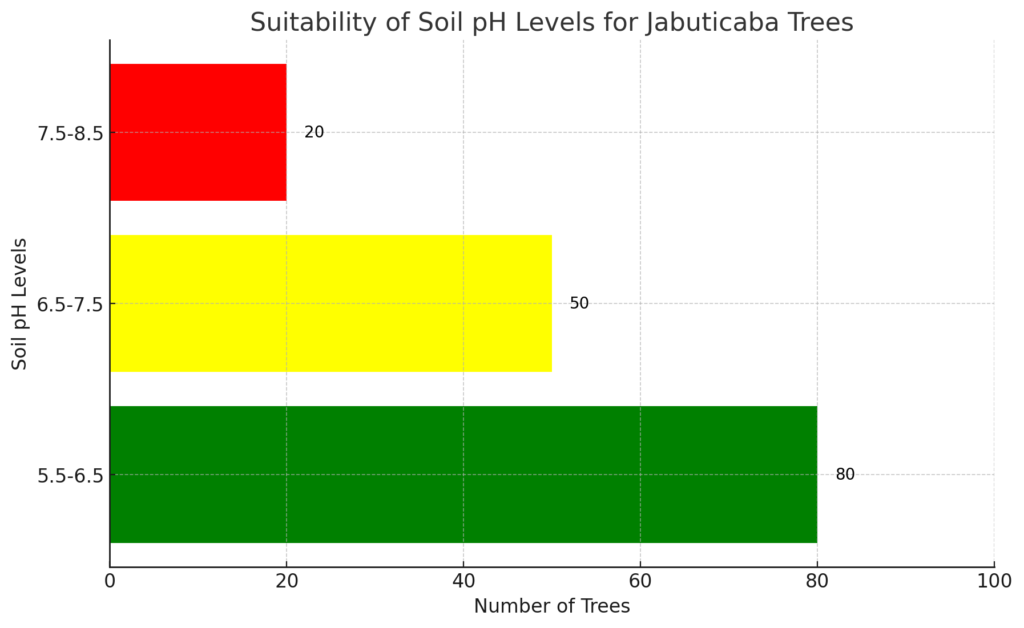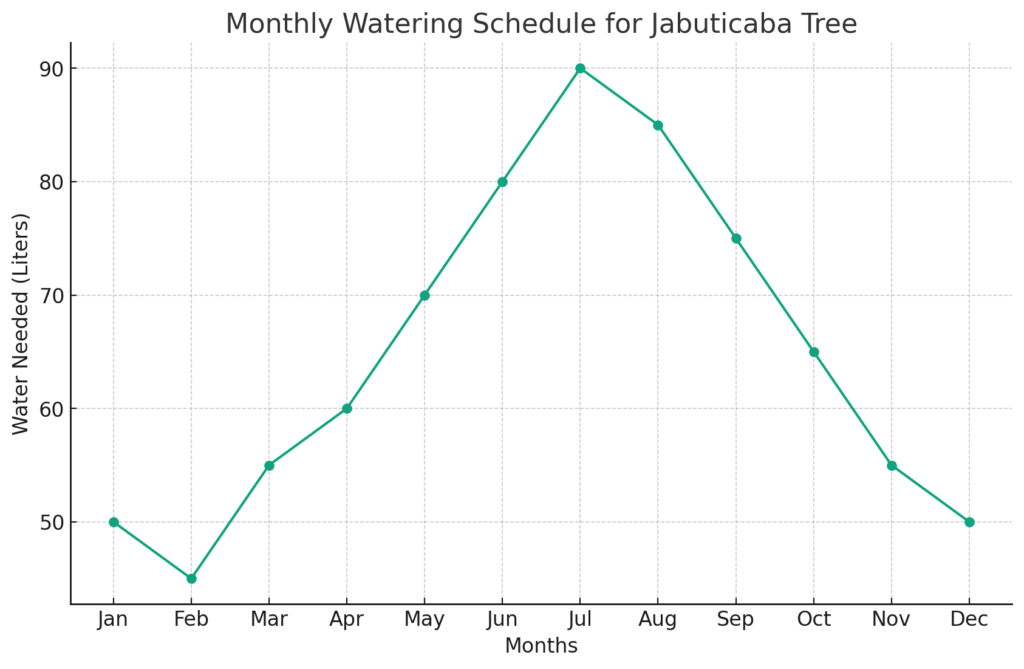Physical Address
304 North Cardinal St.
Dorchester Center, MA 02124
Physical Address
304 North Cardinal St.
Dorchester Center, MA 02124

The jaboticaba (Myrciaria cauliflora) is a unique tropical fruit native to Brazil, also known as the Brazilian grape tree. This exotic fruit tree produces dark purple skinned fruit with a sweet, white pulp that has been described as a combination of grape and blueberry flavors. Jaboticaba trees are admired for their ornamental qualities in addition to their delicious fruit, with thick foliage and showy pink flowers. They thrive in subtropical climates like Southern California and Florida. This article provides an in-depth guide to successfully growing a jaboticaba tree in your own backyard.
Jaboticabas have captivated gardeners with their striking beauty and appealing fruit for over a century. First introduced to Florida and California in the early 1900s, these exotic trees have developed a cult following among tropical fruit enthusiasts who relish their unusual growing habits and scrumptious fruit. Once reserved for specialty botanical gardens, improved jaboticaba cultivars have made growing your own Brazilian grape tree an attainable goal for backyard gardeners in the right climate zones.
While jaboticabas require some specialized care compared to more common fruit trees, they reward farmers with their low maintenance qualities and resistance to pests and diseases. And nothing beats picking those grape-like fruits straight off the trunk and branches of your own productive jaboticaba tree! Whether you’re looking for a conversation-starting tree with ornamental appeal or wish to sink your teeth into a super sweet and juicy fruit, read on to learn how to successfully grow a jaboticaba in your own backyard.
There are three main jaboticaba varieties to consider for backyard growing:
The Sabará jaboticaba is prized for its large, sweet fruit and superior eating quality. It lives up to its name “Sabará” which means “very delicious” in the indigenous Tupi language. The Sabará variety bears the largest fruit among cultivated jaboticabas, averaging 3 centimeters in diameter. Its fruit has a complex, richly sweet flavor with hints of jackfruit and bananas.
In addition to its outstanding fruit, Sabará jaboticaba trees tend to be fast growing and begin producing fruit at a younger age than other varieties. Sabará is self-fertile so it can produce fruit without cross-pollination. It flowers in the late winter and spring. Sabará has good cold hardiness and can tolerate temperatures down into the mid to high 20s Fahrenheit (-2 to -4 Celsius) for short periods.
The Paulista jaboticaba is a moderately large fruited variety that ripens earlier than other cultivars. It bears abundant crops of round, grape-sized fruit with a pleasant grape-like flavor. The thinner skin of Paulista fruit lends itself well for processing and juice production.
Paulista is an excellent choice for commercial jaboticaba production thanks to its precocious fruiting habits, heavy yields, and earlier ripening. It has a spreading growth habit and slightly better cold tolerance than Sabará. Paulista flowers in the winter to early spring. This variety is self-fertile but produces larger yields with cross-pollination.

As the name suggests, the common jaboticaba is the most prevalent variety grown. It originated as a chance seedling selected for its cold hardiness and reliable fruiting. The common jaboticaba produces good yields of medium sized fruit with a sweet muscadine flavor. Its fruit ripens in the late summer to early fall.
The common jaboticaba variety is the most cold tolerant, surviving temperatures as low as 25°F (-4°C) for short periods. It has an upright, compact growth habit making it suitable for smaller yards. Common jaboticaba is self-fertile but benefits from cross-pollination with other varieties. This variety is a good choice for gardeners in cooler winter climates looking for a more cold-resistant jaboticaba.
In addition to these main varieties, there are some jaboticaba hybrids to consider:
When deciding on a variety, match the jaboticaba cultivar to your specific climate and site conditions. Seek out grafted trees of recommended varieties over seedlings for faster maturity and fruiting.
Grafted jaboticaba trees are available from specialty nurseries that carry tropical and subtropical fruit trees. In California and Florida, you can sometimes find them at local nurseries focused on exotic fruits. Paulista and common jaboticaba varieties tend to be more widely available than Sabará and hybrids.
Expect to pay $40 to $60 or more for a grafted sapling from a specialty nursery. Bare root trees ordered online are cheaper at around $25 to $35 per tree.
When selecting a grafted jaboticaba sapling, inspect the graft union carefully and choose a robust specimen with no discoloration or lesions on the bark. The leaves should be fully formed, green, and healthy looking. Avoid pot bound container trees with circling roots. For mail order bare root trees, look for healthy roots without damage.

Jaboticaba trees require specific growing conditions to thrive. Ensuring you prepare the backyard planting site properly will provide your tree with the best chance of success.
Jaboticabas thrive in full sun. They should receive at least 6 hours of direct sunlight per day. Morning sun is preferable to hot, intense afternoon light. Filtered sunlight is acceptable, but avoid planting jaboticaba in heavily shaded locations.
In areas with extremely hot summers, some dappled afternoon shade may be beneficial to prevent sunscald on the trunks. However, shade should never compromise the minimum sunlight requirements.
When screening potential planting sites, track sunlight throughout the day during the growing season. Identify the southwest-facing areas that receive the most direct sunlight for ideal jaboticaba growth.
Jaboticabas thrive in well-drained, acidic soil. Here are some soil specifications:
Test your soil pH and drainage to determine if amendments are needed. When preparing new planting beds, till in organic material and use acidic compost tailored for acid-loving plants like azaleas and blueberries.
Jaboticabas can reach impressive proportions at maturity, sometimes exceeding 40 feet tall by 40 feet wide. This spreading tree needs ample room to stretch out.
When siting your jaboticaba tree, allow plenty of space from other trees, structures like houses, and overhead obstructions such as power lines. The canopy can be pruned and shaped to restrict size, but you don’t want other trees or buildings crowding in too close.
A good rule of thumb is to allow a 20 foot radius open area around the eventual drip line of the tree. This accounts for the jaboticaba’s sprawling growth habit.
For smaller yards, consider growing your jaboticaba as an ornamental patio container specimen that can be moved around. It won’t reach full size but you’ll still get some ornamental value and fruit.
The open area underneath and around mature jaboticaba trees provides excellent opportunities for companion plantings. Some plants make great understory partners:
Avoid planting notoriously aggressive root plants like fig trees or bamboo near your jaboticaba. They will compete for nutrients and water. Deep rooted support plants like poles beans and peas also are not ideal companions.
Follow these steps for successfully planting and establishing your jaboticaba tree:
In subtropical climates like Florida and parts of California, jaboticabas can be planted in the ground almost year-round. However, early to mid spring is ideal timing to give young trees a chance to establish before the heat of summer.
Jaboticaba trees grow vigorously during the warm, humid spring and summer months. Plant them at the start of this growing season to take advantage of rapid root development and canopy growth.
Avoid planting jaboticabas in fall or winter in cooler climates when freezing temperatures can damage young saplings. Wait until after the final frost to be safe.
If planting container grown jaboticabas outside of the peak spring planting window, be prepared to protect young trees from temperature extremes in their first year.

Follow these steps when planting your new jaboticaba tree:
Water the newly planted tree daily for the first week, then 2-3 times a week for the next few months. Reduce frequency as the tree establishes.
Provide support for grafted saplings and smaller jaboticaba trees to protect them from wind damage:
Caring for a mature jaboticaba tree is relatively low maintenance compared to other fruit trees. Focus on providing adequate water, pruning, and protection from freezing:
Jaboticaba trees have perfect flowers containing both male and female parts. However, self-pollination is rare. Cross-pollination between flowers of different trees produces much higher fruit set.
To maximize pollination and fruiting:
With good pollination, a mature jaboticaba tree can produce up to 200 pounds of fruit per year.
One of the joys of growing jaboticabas is harvesting the unique fruit directly off the trunk and branches. Here are some tips for collecting your jaboticaba crop:
Expect heavy crops on mature, well-established jaboticaba trees. Enjoy the bounty! Share with friends and neighbors. A prolific tree can produce 100 pounds or more of fruit each season.

Follow this monthly care schedule for the main tasks involved in maintaining a healthy, productive jaboticaba tree:
Jaboticaba trees are relatively pest and disease resistant, especially when grown in optimal conditions. Here are potential issues to watch for:
Maintaining overall tree health through proper care is the best prevention. Inspect trees regularly for early signs of pests or disease. Take action promptly to manage any issues before they escalate.
| Problem | Symptoms | Solutions |
|---|---|---|
| Nutrient Deficiency | Yellow or discolored leaves | Apply balanced fertilizer |
| Overwatering | Root rot, wilting | Reduce watering, improve drainage |
| Underwatering | Dry leaves, slow growth | Increase watering schedule |
| Pests | Leaf damage, fruit damage | Apply organic or chemical pesticides |
| Disease | Mold, mildew, or fungal spots | Use antifungal sprays |
| Poor Soil Quality | Stunted growth | Amend soil with compost |
| Temperature Stress | Leaf drop, fruit drop | Provide shade or frost protection |
While not the easiest fruit tree for beginners, the unique jaboticaba is a special addition to any subtropical backyard orchard. Following the planting, care, and pollination steps in this guide sets you up for success growing the Brazilian grape tree. In warmer climates like Florida and parts of California, patio container jaboticabas can even be grown as ornamental novelty plants.
A mature jaboticaba in the yard is sure to draw interest and curiosity from visitors not familiar with its eye-catching corky trunk and branch fruiting habits. Nothing impresses quite like picking fresh exotic fruit straight off the tree to sample on the spot! For adventurous gardeners seeking a conversation piece and a delicious, grape-flavored crop, the jaboticaba is a fun and rewarding tropical fruiting tree suited to small spaces.

I’m Rachel Cooper, the brain and heart behind AboutWeirdFruits. If you’re here, you probably share the same insatiable curiosity for the fascinating world of exotic fruits that I do. From the spiky Durian to the unique Buddha’s Hand, I’ve been captivated by the diversity, flavors, and benefits these rare fruits bring into our lives.